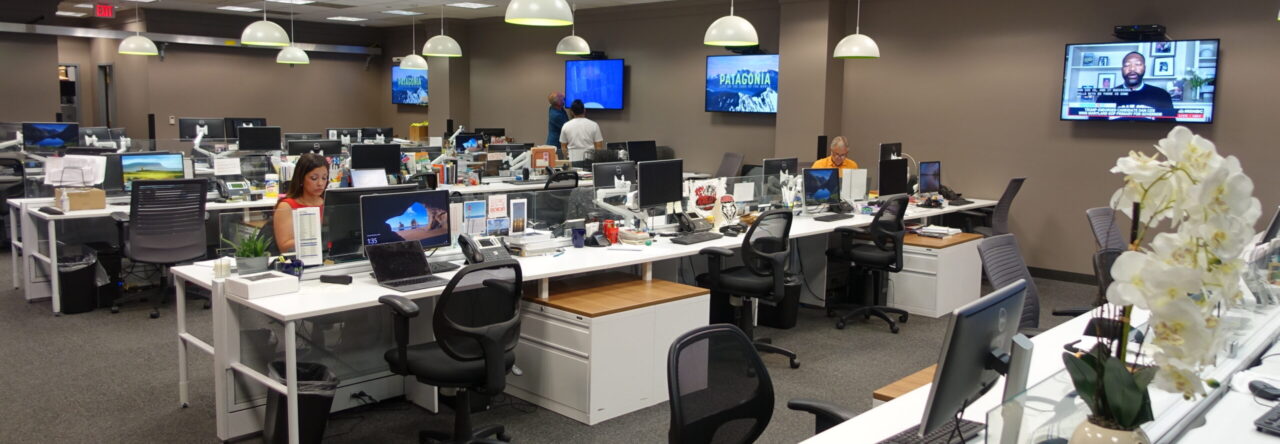
Photo (cc) 2008 by Stefano Brivio
The release of a new report by Penelope Muse Abernathy on the state of local news is always a big deal. For 15 years now, she’s been tracking the extent of the crisis, and has done more than anyone to popularize the phrase “news deserts,” which describes communities without a source of reliable news and information. This week Abernathy, now at Northwestern University’s Medill School, issued “The State of Local News 2023.” It’s a downbeat report, although there are a few bright spots. Here’s a key finding:
The data and insights collected and analyzed in this 2023 report on The State of Local News paint the picture of a country and society increasingly divided between the journalism-have’s — mostly residents in more affluent cities and suburban areas where alternative news sources are gaining traction — and the journalism have-not’s, those in economically struggling and traditionally underserved metro, suburban and rural communities. This partitioning of our citizenry poses a far-reaching crisis for our democracy as it simultaneously struggles with political polarization, a lack of civic engagement and the proliferation of misinformation and information online.
Before I continue, a disclosure: Abernathy, who’s been a guest on our “What Works” podcast about the future of local news, was kind enough to provide a pre-publication endorsement of the book that Ellen Clegg and I have written, “What Works in Community News,” which comes out in January.
Abernathy’s principal collaborator on the new report is Sarah Stonbely, director of Medill’s State of Local News Project, who I interviewed in 2022 when she was at the Center for Cooperative Media, part of Montclair State University in New Jersey.
If you’d like a good summary of Abernathy and Stonbely’s report, I recommend Sarah Fischer’s overview in Axios, which leads with the prediction that the U.S. will have lost one third of its newspapers by the end of 2024.
The cleavage between affluent urban and suburban areas and less affluent urban and rural areas is one of the major challenges Abernathy and Stonbely identify, and it’s definitely something that Ellen and I noticed in our reporting for “What Works in Community News.” I recall asking folks at the start-up Colorado Sun why they were trying to stretch their resources to cover stories across the state rather than focusing on Denver. The answer: the Denver metro area was already fairly well served despite massive cuts at The Denver Post, owned by the hedge fund Alden Global Capital. By contrast, there was very little news coverage in the more rural parts of the state.
As Abernathy and Stonbely put it: “The footprint for alternative local news outlets — approximately 550 digital-only sites, 720 ethnic media organizations and 215 public broadcasting stations — remains very small and centered around metro areas.” Indeed, this chart tells a rather harrowing tale. As you can see, people who live in news deserts are considerably less affluent and less educated than the national average.

The report also includes a section called “Bright Spots in the Local News Landscape.” Although the interactive map is a little hard to navigate, I can see that several projects that Ellen and I profile in “What Works in Community News” are included, such as NJ Spotlight News, the Star Tribune of Minneapolis, The Texas Tribune, The Colorado Sun and the Daily Memphian.
The report also highlights The Boston Globe as one of its good-news stories, observing that, under the ownership of John and Linda Henry, the paper has thrived on the strength of its digital subscriptions. In a sidebar, Tom Brown, the Globe’s vice president of consumer analytics, tells Abernathy that digital growth continues, although at a slower rate than during the COVID pandemic. Retention is down slightly, too. “We are nonetheless still seeing overall strong retention,” Brown says, “and we are investing in several areas of the business with the goal of engaging subscribers more and, in particular, our new subscribers.”
Editor Nancy Barnes adds that though the Globe is ramping up its coverage of the Greater Boston area as well as in Rhode Island and New Hampshire, it can’t fill the gap created by the gutting and closure of local weekly papers at the hands of Gannett, the giant newspaper chain that until recently dominated coverage of the Boston suburbs and exurbs.
“Having returned to Boston after many years away, I have been stunned by the decimation of local newspapers across Massachusetts and New England,” Barnes says. “However, our coverage strategy is not tied to specific Gatehouse newspaper communities [a reference to Gannett’s predecessor company]. We cover greater Boston in depth, but we don’t have the bandwidth to be the local news source for everyone.”
This week’s Medill report is the first of a multi-part series. Future chapters will be released over the next few weeks and into January.
Leave a comment | Read comments















